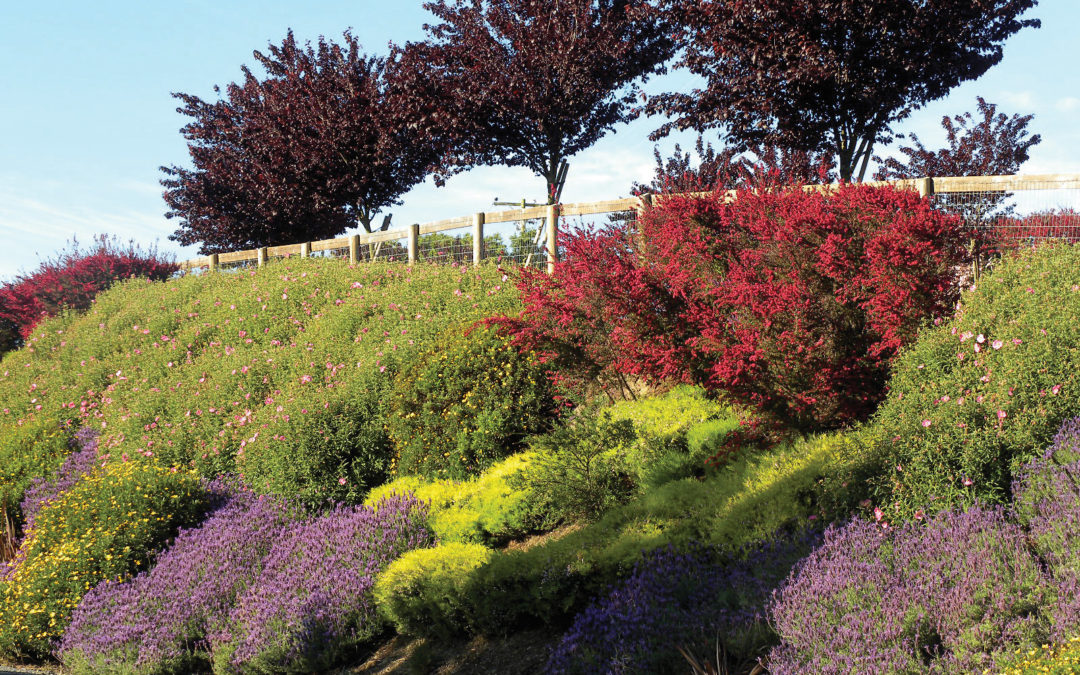As landscape contractors, we get calls from homeowners whose properties are on slopes in various parts of Sonoma County and Marin County. Depending on various factors such as budget and the severity of the slope, an early decision must be made: terrace the slope using retaining walls, or leave the slope as is and plant the hillside. Retaining walls and terracing is the subject of another blog. This one will focus on the techniques and aesthetics of hillside planting.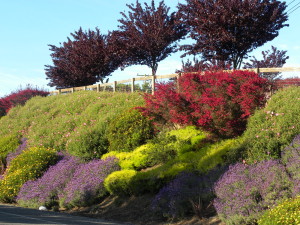
The two methods Details Landscape Art uses to control erosion are 1.The installation of jute netting across the slope, and then 2. The planting of trees, shrubs and ground covers with invasive root systems that help bind the soil. Jute netting is a burlap type material. It comes in rolls and is an openwork netting that is pinned down to the soil with u shaped jute staples. It helps keep the finished bark or mulch layer from just rolling down the slope. It provides a measure of friction, if you will. It is not one hundred percent, but does help erosion control. An ‘X’ is cut in the jute netting, the corners peeled back, a hole is dug, the plant is planted, and a watering basin built to prevent runoff,.Drip irrigation is run to each plant (on the uphill side of the plant of course), and the corners of the jute netting replaced.
One word of caution…overwatering is the cause of many slope failures. Landscape irrigation of a slope combined with natural winter rainfall can seriously reduce slope stability. So we are careful to use only drip irrigation, and use only the minimum size emitters to provide sufficient moisture to the plant. Once a month fertilizer application with a hose end feeder is the only other irrigation recommended during the dry summer months. The watering basin helps retain the water from the drip emitter so the plant has a chance to actually absorb the water and to ensure that most of it does not run down the hill.
Trees and plants we like to use in our tapestry of hillside planting include:
- Chinese Pistache (Pistacia chinensis) – large tree with stunning iridescent fall foliage
- Western Redbud (Cercis) – ‘Forest Pansy’ debuts in early spring with light purple flowers on bare branches, followed by heart shaped maroon leaves all summer long before dropping in late fall
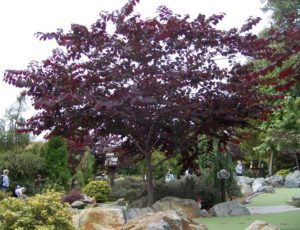
- Chinese Hackberry (Celtis) – upright branching habit reaches 40 feet tall and wide
- California Lilac (Ceanothus) varieties – (see March 2018 blog) ranging from small leafed upright shrubs to larger leafed ‘Yankee Point’
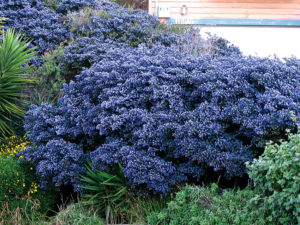
- Rockrose (Cistus) – numerous varieties from white rockrose to orchid spot rockrose to crimson spot rockrose
- Cotoneaster varieties – lacteal is a large 10-12 foot shrub with white flowers and red fruit
- Lavender (Lavandula) varieties
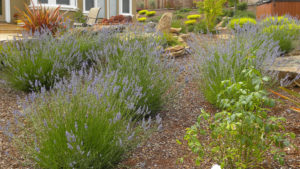
Mediterranean style garden featuring French lavender
- Manzanita (Arctostaphylos) – Howard McMinn shows shiny mahogany bark
- Rosemary (Rosmarinus) – ‘Collingwood Ingram’ is a lovely shrub variety
Ground covers that bind the soil are very important in controlling erosion. We recommend:
- Rosemary ‘prostrata’ or ‘Lockwood de Forest’ really bind the soil. Tough hardy deer resistant plant
- Manzanita ‘Emerald Carpet’ – great lush green foliage, spreads to four feet
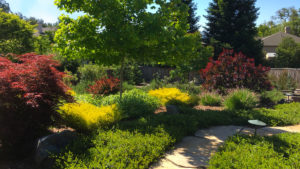
Premier landscape design by Details Landscape Art
- Ceanothus ‘Carmel Creeper’ – shiny bright green leaves spreads to 5-15 feet wide.
Using our standard artistic technique of mixing heights, textures and bloom seasons, we can create an interesting and colorful palette of hillside planting.

